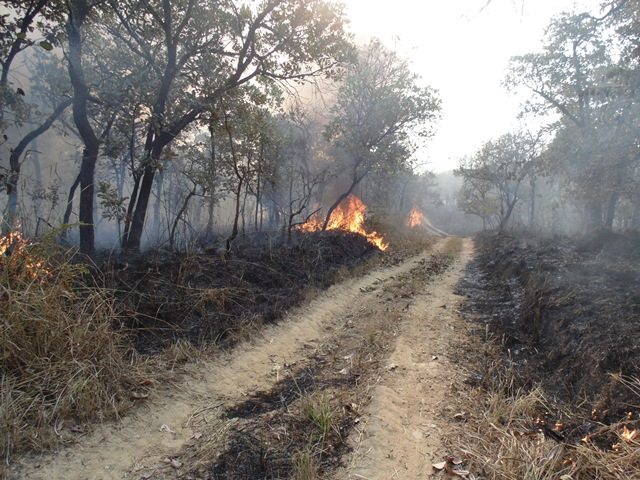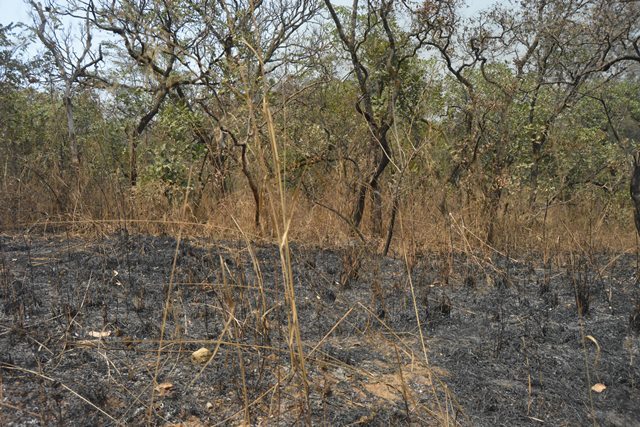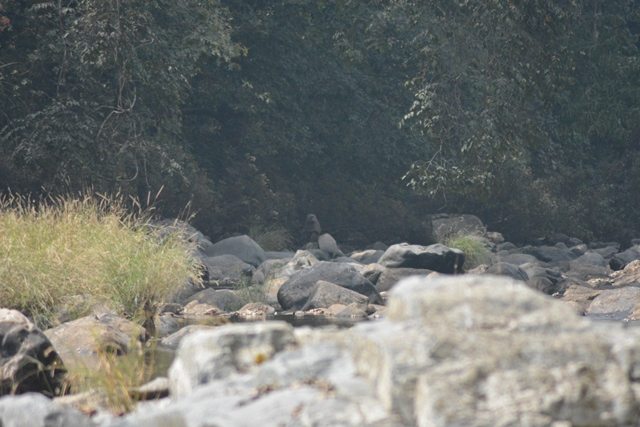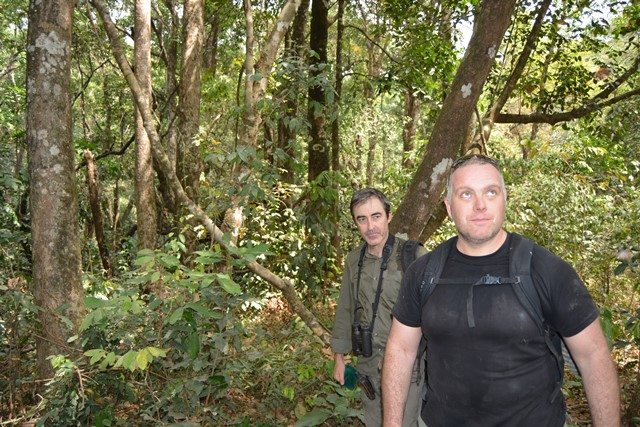Tag: Creating wildlife champions
On the guest list were a range of businesses from the city, including restaurants, cafes, hotels, visitor attractions and workplaces. The initiative, led by Chester Zoo alongside key partners in Chester and around the UK, is all about collaboration!
Research carried out by our conservation colleague Prof Serge Wich and other incredible scientists, revealed that 100,000 orangutans have been killed in Borneo since 1999 – with hunting and deforestation the main reasons for this devastating revelation.
Our main aim was to bring learning to life, giving Year 10 and 11 students the opportunity to undertake group work and engage in problem solving activities to solve the mystery of the murdered goat.
Upon entering our Islands Sumba schoolhouse, our students are instantly transported to the farmlands and bordering tropical rainforests of Nepal, thanks to our 360 degree wall projection system. They’re instantly faced with a crime scene; the chalky outline of a dead goat and some clues left behind by some pretty large predators. Their mission: to investigate the claims of a local farmer, who’s blaming a tiger for the death of his precious livestock.
Post from RICOH THETA. – Spherical Image – RICOH THETA
As a result of successful conservation work over the last few years, pleasingly tiger numbers have increased. Sadly however, attacks on people and livestock are becoming more frequent as a result.
With the use of camera trap images and real bioartefacts, the students will examine different animal monitoring techniques and discuss the pros and cons of each. We then move on to genetic sampling methods, with a basic overview of the genome, chromosome, DNA, base pairs, mutations and microsatellites. Armed with this background knowledge, the students then ‘sequence’ the DNA in their chosen faecal samples using augmented reality, before matching this genetic fingerprint to our database. Once they’ve successfully identified what kind of animal was present at the crime scene, it’s time to find out ‘poo done it?’ by ‘metabarcoding’ the sample to see what their animals have been eating! If domestic goat appears on the menu, then we’ve found our hungry predator!
We explore Chester Zoo’s involvement in reducing this human-wildlife conflict, watching video interviews with our Conservation Science Project Manager, Valerie de Liedekerke. She explains how Chester Zoo staff members are helping villagers to construct predator-proof pens and use biogas stoves, thereby limiting the contact they have with wild animals and allowing them to coexist peacefully.
Post from RICOH THETA. – Spherical Image – RICOH THETA
We really wanted to showcase some of the exciting work that Chester Zoo is involved with out in the field, so using our Living with Tigers project work seemed a perfect way to build upon and provide context to the students’ school-based classroom learning. It was great to develop a session working closely with our science and conservation teams, having the support and expertise of Valerie and Simon Tollington (Conservation Scientist).
We’re really excited to see the reactions of the students, and look forward to working closely with our incredible science team on future workshops! Find out more about this workshop, here >
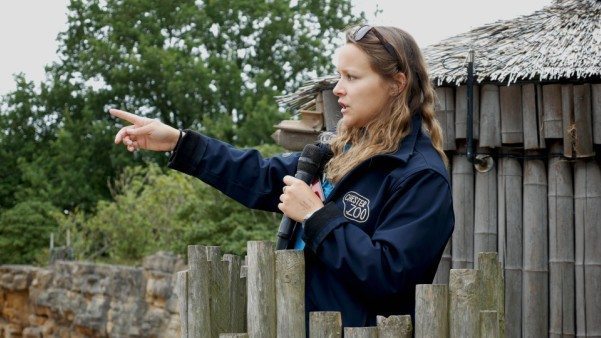
“It’s autumn at the zoo. For the Zoo Ranger team, that means we are busy tidying up after the summer holidays and preparing for our winter activities. We’re open every day throughout the autumn season and need to be ready for our visitors who are about to arrive…
9am
“We arrive just before 9am to change into our uniform, attend meetings and prepare for the day ahead. During this time we catch up on animal news, plan new events and liaise with other zoo teams to get everything ready before the zoo opens. There’s no such thing as a typical day for a Zoo Ranger. Adaptability and team work are key and we’re all excited to get out into the zoo to see what today will bring.
10am
“It’s time to head out into the zoo to find some visitors! The first discover session starts at 10am so there is plenty for visitors to get involved with from the moment we open. Discover sessions usually showcase exciting artefacts (such as skulls, teeth and even real poo) along with interactive activities to get our visitor’s brains whirring. Today it is Discover Bugs in Butterfly Journey where we introduce our visitors to a fantastic real life Jungle Nymph. Visitors can get nose to nose with these huge green insects and learn about how important invertebrates are in their ecosystems, whilst watching beautiful butterflies!
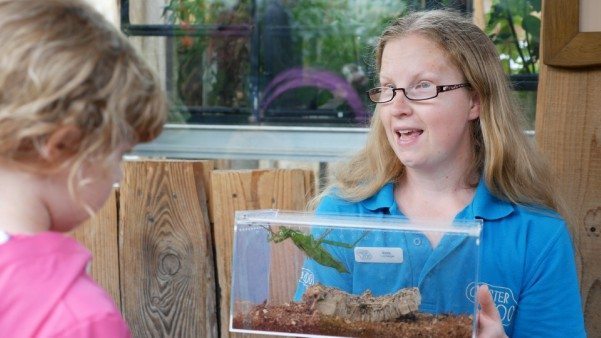
11am
“Next on the agenda are our scheduled talks. We start each day by introducing everyone to the Hi-Way family – our incredible herd of Asian elephants. We aim for our talks to be between 5-10 minutes but we can talk for much longer! Especially when our elephant calves, Aayu, Indali and Nandita, are playing around in the elephant paddock. After the talk we always make time to chat to our visitors. Lots of them want to find out even more and have plenty of questions to challenge our knowledge. Some of our visitors will walk with us to the next talk of the morning to discover more of our amazing animals.
“One of my favourite talks takes place in Dragons in Danger and is all about Komodo dragons. It is hard not to be impressed with Jan-tan our adult male and there are so many incredible (and recent!) discoveries about these reptiles that make it very easy to connect our visitors to these magnificent animals. We often use artefacts at our talks and I love getting out our fake blood which is the easiest way to demonstrate the effect of Komodo dragon venom!
1.30pm
“We feed the birds at this time. There’s one that takes place in Tropical Realm and one at the Tsavo bird aviary, on alternate days. The species in each bird feed are very different so it is hard to pick a favourite but the lilac-breasted roller has to be the most colourful! He is in Tsavo (our African aviary) where it is easy to see some of the amazing and complex nest building skills of some of our birds.
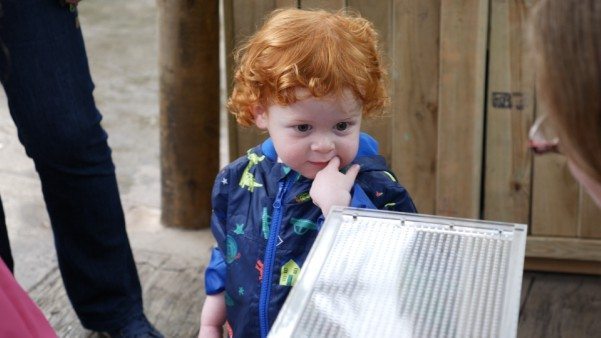
2pm
“It’s time to PLAY! This year we want all our visitors to play (yes grownups, you too!) and we have a busy playful schedule of activities to encourage you all to do just that! Most of our activities take place at Basecamp; the centre of our exciting new Madagascar play area. You can often find a Zoo Ranger there engaging families in all sorts of fun and games from Story Time for little ones, to playing giant snap or having a go on different musical instruments. My highlight is Play Show during which children join us on a Madagascan adventure, learning about some of the fabulous animals that inhabit Madagascan forests along the way.
3pm
“If we aren’t busy at PLAY! or at the afternoon talks then we will definitely be spending some time in Fruit Bat Forest. There is always a Zoo Ranger in there to answer questions and guide people through the habitat which can be quite daunting for some. We meet a huge number and variety of people in here; one moment we could be talking a group of excited school children and the next we’re chatting to a life-time zoo member. Some of our members visit often. This challenges us to keep learning more about our bats so that we can teach even the most seasoned visitor new things. And all the while we are stood in the dark with around 600 fruit bats! Needless to say, there is never a dull moment!

4pm
“Our day at the zoo is drawing to a close, just time for one more Discover session, this time in Spirit of the Jaguar. Our activity is all about interdependencies in the Amazon rainforest and how people can act to help stop deforestation.
“A lot of families will already know they can recycle paper but do they know how vanilla, rubber, tonic water, chocolate and coffee are linked to the rainforest? Do they know that we wouldn’t have Brazil nuts without the agouti? Or how our giant anteaters, jaguars, sloths, and tapirs are connected? And why do we only sell Shuka coffee at the zoo?
“As you can see, we could talk endlessly about the world’s rainforests. With such little pristine rainforest now found across the globe, we think it’s more important than ever that people know how they can act to help us protect them. That is why you will often see us shouting about sustainable palm oil and Rainforest Alliance at every possible opportunity!
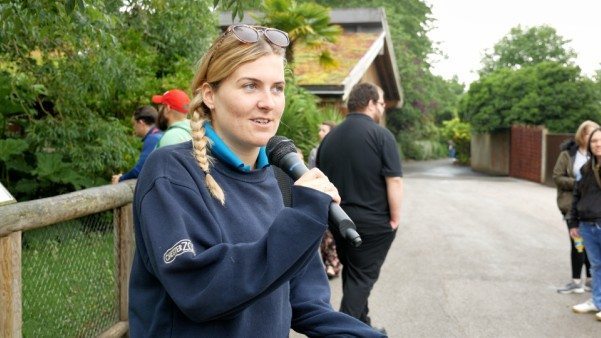
4.30pm
“Back to the office after a busy day in the zoo, but there’s no time for a rest! We’ve got plenty of planning to be getting on with. Over the next couple of weeks we’ll be celebrating World Animal Days, running our popular Sunday kids club, Junior Rangers and its already time to start thinking about what we will do to celebrate British Science Week next year… “
The team help connect our visitors to the animals they see in the zoo, which is an important way to act for wildlife, as the more people connect to an animal the more likely they are to want to help protect the species.
Watch the video below to see more…
Fred Howat, Interpretation Officer, is often tasked with researching, writing, designing and installing interpretation around the zoo. These range from signage about our species to conservation projects and scientific research we’re doing at the zoo. It might also include exhibition theming, audio / visual elements and even commissioning bronze statues and artworks. However recently, he was asked to work on something slightly further afield.
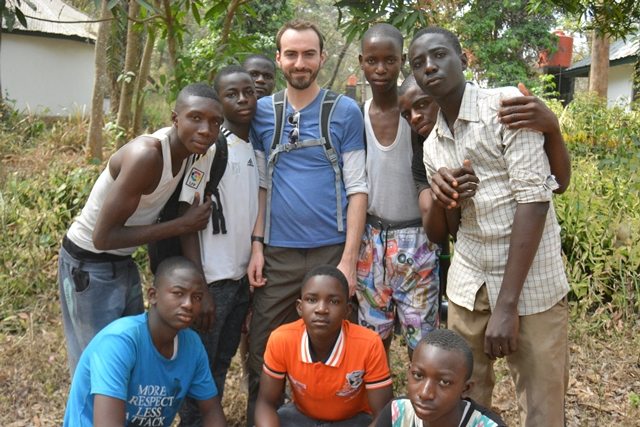
Below, Fred tells us about the project that led him to Nigeria, and using his skills to support our Gashaka Biodiversity Project.
“The Gashaka Biodiversity Project (GBP) is one of our conservation projects based in Gashaka-Gumti National Park, Nigeria. Working alongside the National Parks Service, we monitor the endangered Nigeria-Cameroon chimpanzee, as well as study the varying ecosystems of the region using camera traps and surveys.
“As part of this project, we built an education centre on the edge of the park which serves local schools and visiting tourists. As part of my job, I was tasked with creating an exhibition for this space that could be used to teach school children about the importance of the National Park.
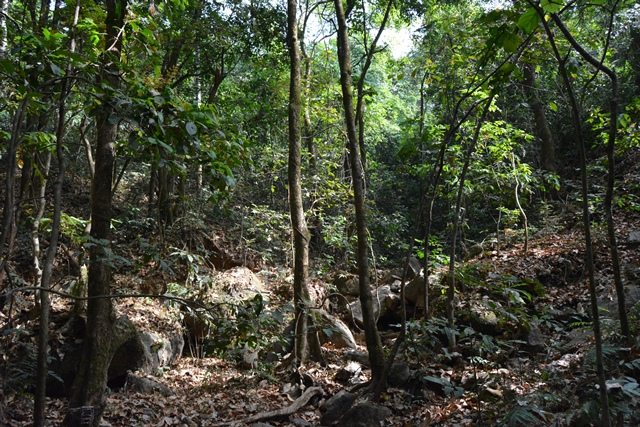
“My first job was to make contact with Stuart Nixon, our Field Programme Coordinator for Africa. He’s visited the park numerous times and knows the project. He was able to help me identify some key issues in the park that we could explain in the interpretation. Not only this, he put me in contact with the staff directly working in the park who I could ask more detailed questions.
“After several weeks of research and emailing, it became clear that creating an exhibition for a space I hadn’t seen was going to be quite difficult. So, soon after, it was decided I’d travel to Nigeria to see the park first hand.
“My trip to Nigeria was both my first to Africa and my first to a National Park. Flying to Abuja, the Federal Capital of Nigeria was a real eye-opener and insight into a vastly different culture. After a day’s rest, another short flight to Jalingo and four hour car ride, we arrived in Serti, a large town on the fringes of the park. This is where the Gashaka-Gumti National Parks Service is based, as well as the education centre I would be working on.
“Here we met with various staff from the park who took us to the education centre. I was able to have some good discussions about what sort of interpretation they wanted, as well as take measurements of the building and wall space. However, to really understand some of the problems faced in the park, we needed to head further in to it!
“After a two hour jeep drive, 30 minute motorbike ride and then short hike into the park, we arrived at Kwano, our research camp deep in the heart of the park. Here, we had 24 hour solar power, cooking and refrigeration facilities, a running shower (water is pumped from a local river and heated by the sun) and field assistants who maintain and manage the camp throughout the year.
“The park and camp area are beautiful, with dense forest and tall trees lining the route in. We encountered black and white colobus monkeys and some inquisitive, if not slightly intimidating olive baboons just a short distance away. It’s also not uncommon for a local troop of chimps we regularly monitor to visit either! After dumping our gear, a few hours (sweaty) hike south, following a trail of camera traps that had been set up months before, took us to a beautiful river, lined with sandy and rocky shores.
“To avoid overheating we decided to have a quick dip in the river before having lunch, all watched by another troop of baboons further down the river. Floating in the cool water, staring at the tree-lined blue sky, it was easy to forget that there was a reason we were in this beautiful forest. Beyond the treeline and further down the hill, thick black smoke was rising.
Global conservation will always rely on strong partnerships with local organisations and individuals, and nowhere is this truer than at Gashaka-Gumti National Park.
“Despite the immediate beauty of the park, it’s under huge pressure from a rapidly growing human population. Cattle grazing is the staple means of income for local people, and they roam the park in their thousands. To promote grass growth in the dry season, swathes of savannah and forest get burnt down. While this encourages new shoot to grow (and feed the cattle), it also destroys vital habitats for many species. With enough burning and cattle grazing, the forest edges close further in, shrinking what’s left of this precious ecosystem.
“And this brings us back to the interpretation. Creating an exhibition in the education centre which explains the issues is one step to saving the park. Teaching local children about the importance of saving the park also helps instil pride in their local surroundings. After several days of talking with staff, school children and teachers, I’d gained enough information and knew what I needed to do. The hard work back in the office was all to come.
“With a more environmentally friendly generation growing up, we’re hoping that they’ll take on the gauntlet of saving the park. We’ll continue playing our part, working together to protect and monitor the species found there, and to help educate the next generation of conservationists.
“Global conservation will always rely on strong partnerships with local organisations and individuals, and nowhere is this truer than at Gashaka-Gumti National Park; a place I’d be visiting again in several months’ time to install the exhibit.”
Watch the video below to hear what some of our partners have to say about working with Chester Zoo and the benefits of working in collaboration…
Working with Chester Zoo is a completely different way of working. So much of what we do in education is about preparing young people for the future and conservation is really at the heart of that. And it’s everybody’s responsibility.
In 2000, Luisa Rebecchini decided to do her MSc Biology thesis on spider monkeys. Having no experience with the species, Luisa contacted spider monkey expert Dr Filippo Aureli who advised her to spend two months at Chester Zoo during the summer.
Dr Nick Davis, Assistant Curator of Mammals at Chester Zoo explains:
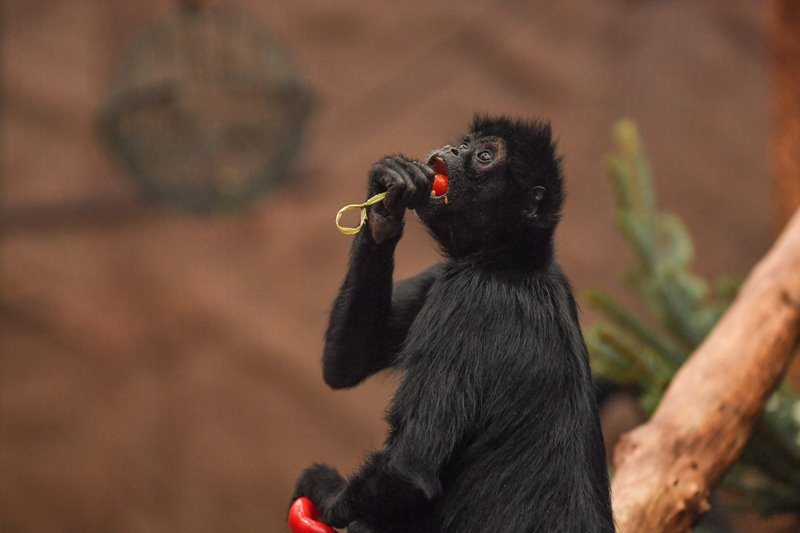
We have a long history of looking after spider monkeys at Chester Zoo. They have an interesting social system more similar to chimpanzees than other monkeys, making them an interesting species to study. A number of students have observed the group at Chester Zoo to learn to recognise typical spider monkey behaviours before going out to their habitat to study them in the wild.
Chester Zoo helped Luisa improve her behavioural knowledge of the species and trained her to record behavioural data. She then headed to Mexico to complete her field work in a little Mayan village during six month. Luisa was soon to discover that this first trip to Mexico was far from being her last! Luisa tells us:
“I had never worked in the field before so I didn’t know how to collect behavioural data! During my time at Chester Zoo, I was going to the zoo every day to look at the spider monkeys. The time at Chester Zoo was really helpful because I then went immediately in the wild so at least I knew the basics.
“When I finished my Masters I went back to Mexico but this time working with Filippo as a volunteer. I was collecting data on spider monkeys for a Chester Zoo supported project looking at differences in behaviour between populations in Mexico and Costa Rica.”
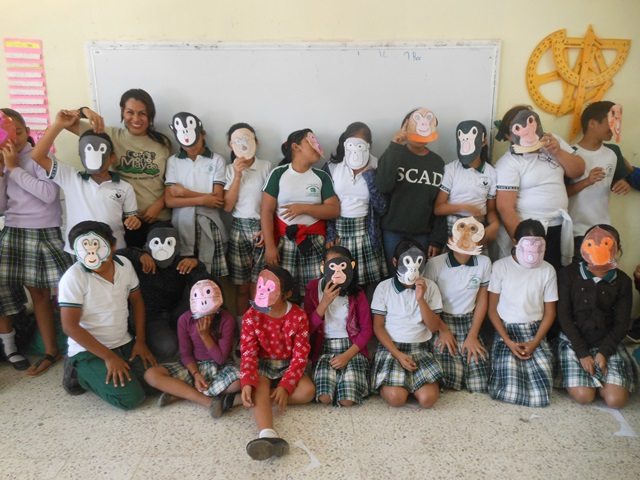
Later on, Luisa applied to a PhD with the University of Chester to keep studying this fascinating species. This time her research focused on the way spider monkeys manage conflicts.
“We wanted to find out whether or not spider monkeys reconcile after a conflict. I didn’t find evidence of this but I found that the monkeys actually split after a conflict. By splitting, they avoid an escalation in the conflict.”
After finishing her PhD, the Italian researcher realised that she wanted to do something slightly different for the conservation of the spider monkeys. She moved away from research and started working on raising environmental awareness within Mexican communities.
“There is very little awareness about anything that is concerned with the environment in Mexico and this clearly affects spider monkeys among many other species. Working with the Mexican NGO ConMonoMaya, I began giving talks in schools and other institutions about spider monkeys and their environment. I quickly noticed that local people often didn’t know that these monkeys lived around their villages.
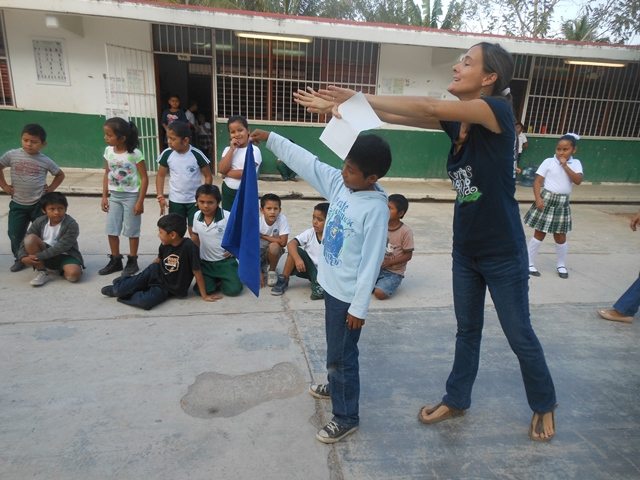
“After a while I realised that it would be good to broaden my talks. It’s very easy to get kids enthusiastic about monkeys but at the end it’s not only about the monkeys. The more involved you get in environmental issues the more effective you can be at conserving those animals!
“The new set of talks developed by ConMonoMaya highlights the main threats facing spider monkeys in Mexico. Those threats include mainly habitat loss but also animals being captured to be kept as pets. The talks now also mention issues such as climate change, pollution and animal wellbeing. The idea is that the students can see how everything is connected and can also see the value of the natural resources that surround them.”
Supported by Chester Zoo, this Project of Environmental Education extended in January the number of talks it gives to each school. Instead of coming only once, the team now visits the schools once a week for 10 weeks.
Scott Wilson, Head of Field Programmes at Chester Zoo, tells us more:
“Chester Zoo has supported spider monkey research in Latin America for many years. One of the outcomes has been to identify the need for more awareness of conservation and environmental issues amongst local communities. The activities of ConMonoMaya address this need and expand our conservation support for this threatened primate.”
Luisa concludes:
“Repeated visits allow the team to pass on more information but also allow them to build rapport with the students. You build a relationship with the kids and you notice who is really interested. We want to build something that digs a bit deeper so that we can really change students’ way of thinking.”
Our team not only work with schools and communities in the UK, they also support our conservation partners around the world working with them to provide training, capacity building, ideas for learning resources as well as research and strategic planning for the educational elements of the projects.
